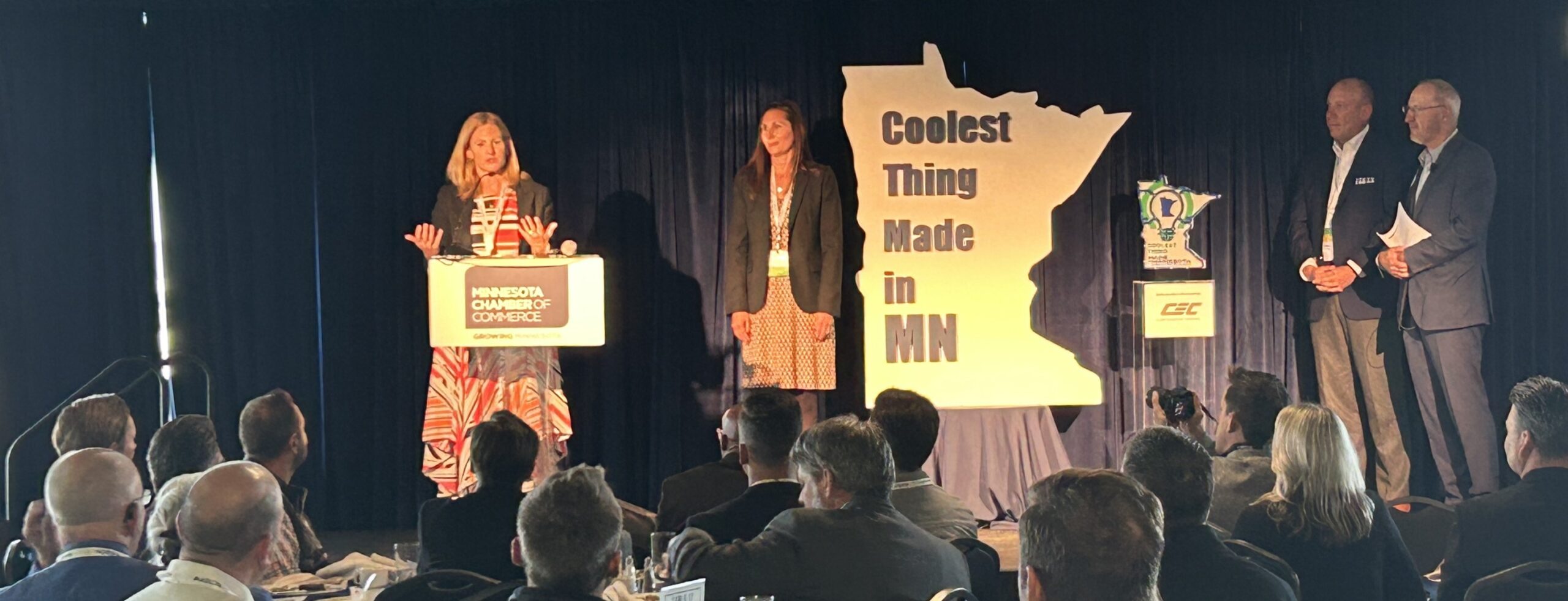Industry tradeshows are a great opportunity for B2B companies to launch new products and make company announcements, as well as have 1:1 time with customers and high quality leads. In fact, lead generation accounts for roughly 80 to 85 percent of the reason companies choose to exhibit.
While a great lead generation tactic, they can also account for upwards of 41 percent of a company’s marketing budget, according to CEIR’s “2018 Marketing Spend Decision Report.” Take, for instance, the 45th Association for Professionals in Infection Control and Epidemiology (APIC) Annual Conference that was held in Minneapolis in June—companies paid anywhere from $15k to $90k for a booth.
To maximize your ROI, you can’t just show up. You need to have a strategy in place which includes pre-, during- and post-show marketing to maximize your presence and capture high quality leads.
Before we dive into that, here are three things you can do to up your tradeshow game and give your company something to talk about before and during the show.
- New product announcement.
Ninety-two percent of tradeshow attendees say they are looking for new products, making tradeshows an opportune time to introduce a new product. - Thought leadership engagement.
Beyond exhibitors, many attendees go for the education and professional development opportunities. Securing a speaking engagement can build credibility for your brand, as well as set you apart as a thought leader. - Exclusive event.
Hosting a private event within the show is a great way to capitalize on having access to both your current and prospective clients. Meet and greets can provide customers time to learn more about your products, meet your experts and build relationships. Other events can include workshops or, if your company has a facility near the event, an invite-only tour for customers.
Once you have decided what you will talk about and promote at the show, be sure to take advantage of pre-, during- and post-show marketing opportunities. Below are some to consider.
Pre-show
- Trade magazine coverage and outreach.
Typically tradeshows publish a list of press members attending the show. Most of these publications will have pre-show coverage or will issue a bonus distribution at the tradeshow. Participating in these press opportunities can help create buzz and draw attendees to the booth. In addition to distributing press announcements to the media, schedule booth interviews or invite editors to your exclusive event. - Email campaigns.
According to the CEIR research, tradeshows are the face-to-face marketing channel of choice for brand marketers. Take advantage of the opportunity to connect with your current customers. Send out “save the dates” and invite customers and prospects to stop by your booth, attend your speaking engagement or come to your exclusive event. Also engage your sales reps to invite their customers and send out reminders about the tradeshow. - Sponsorship programs.
Although an added expense, participating in sponsorship programs can help you maximize your brand awareness. For example, the APIC sponsorship opportunities help maximize your company’s exposure and increase booth traffic by including your company logo on the conference website, pre-show marketing material and onsite signage, as well as coverage in the show daily. Some tradeshow sponsorship packages also provide email blast programs, attendee contact lists and guaranteed speaking opportunities. - Social promotions.
Don’t forget to promote your booth information on your company social media sites. Encourage attendees to sign up in advance to enter a drawing that they have to show up at the booth to collect, invite them to register for your exclusive events or to see demos at the booth. If you are planning a new product announcement, you can also publish blog posts leading up to the show to build anticipation for the announcement and hold a reveal at your booth.
During
- Booth experience.
More than products, having other incentives at your booth can draw in attendees. This can include food, contests, giveaways, stunts, coupons, etc. For example, at the APIC Annual Conference, 3M handed out goodie bags filled with samples and literature for attendees who stopped by all six stations in the booth. These goodie bags traveled around the show floor encouraging more visitors to stop by the booth to earn their own. Another healthcare company had its workers wear light up shoes to represent its UV shoe disinfectant technology. This got people’s attention as they walked the show floor and, in turn, drew people to the company’s booth. We’ve also seen companies provide unique experiences like virtual reality or hologram presentations to draw attention. - Signage and advertising in and around the tradeshow.
It can be easy to get lost in the noise on the tradeshow floor, but there are opportunities outside the show to reach your audience. Consider investing in guerilla marketing, including welcome packages at hotels or advertising on buses or at the airport. You can also reach attendees online by geofencing digital ads to those within a few miles of the event center. - Social media.
Don’t let the show pass you by – be active and involved on social at the show. This can include live tweeting, live blogging or live streaming a press conference. It is also important to monitor and follow conversations surrounding the show and participate when possible. - Collect sign ups and high quality leads.
Set up your booth to encourage attendees to sign-up for more information and to capture high-quality leads. Instead of handing out literature at the show, ask for email addresses to send them the material after to grow your email list. And if the show has scanners, incentivize attendees to participate or view a demo at your booth before scanning their badge to help make sure they are a high-quality lead and not just a passerby. - Conduct media interviews.
Use tradeshows as a way to build relationships with the media. Not only does it provide a great opportunity to share new product or company news with them that they can include in post-show issues, but you can also use these meetings to set your company apart as a thought leader on specific topics for future articles.
Post-show
- Follow up with attendees.
The ability to prove an initial ROI is dependent on how many qualified leads come from the show, and not just how many people visited the booth. However, 90 percent of tradeshow attendees don’t receive any follow-up within 12 months of their visit, according to Danny Zecevic, a digital content marketing professional at Skura Corporation. Set your company apart and follow up with attendees immediately after the show while your company is still top of mind. This can include thank you emails to those who visited the booth. Be sure to include a strong call to action, such as download a piece of content or get a quote. You can also engage your sales reps to call on leads who indicated buying interest. - Post-show content.
Beyond seeking out coverage in trade publications, use your blog and consider posting a recap to share highlights from the show. For example, 3M published a blog after APIC to showcase everything that happened at its booth for those who were not able to attend. - Retargeting.
Put the email addresses you captured to use with programmatic display advertising or retargeted LinkedIn sponsored content. Continue to publish valuable content to nurture your prospective clients and help move them through the funnel.
To get the most out of a tradeshow, it is important to have a marketing plan that covers pre-, during and post-show. If you are looking for ways to grow the ROI of your tradeshow, we’d like to help. Shoot us an email at connect@inprela.com.



